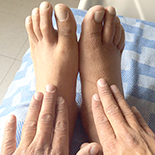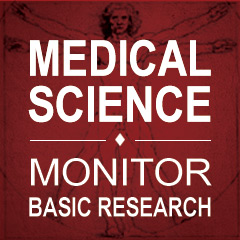Eisenmenger Syndrome in Congenital Heart Disease with Clinical Features of Differential (Fingers and Toes) Clubbing and Cyanosis
Mateo Porres-Aguilar, Carlos E. Rodriguez-Castro, Mateo Porres-Munoz, Cesar A. Siska, Jose L. Aguirre, Alma Santiago-Balandran, Aamer Abbas, Oscar C. Munoz, Debabrata Mukherjee
Med Sci Case Rep 2014; 1:47-49
DOI: 10.12659/MSCR.892953
Available online: 2014-11-29
Published: 2014-11-29

Background:
Eisenmenger syndrome represents the most advanced form of pulmonary arterial hypertension (PAH) associated with congenital heart disease. Although patients with Eisenmenger syndrome frequently survive in to their third or fourth decade of life, the severity and progression of symptoms of the disease, including cardiac dysrhythmias, prothrombotic and bleeding diathesis, and right ventricular failure represent frequent late complications and causes of sudden death.
Case Report:
A 46 year old hispanic male presented with longstanding progressive dyspnea, exercise intolerance, and increasing cyanosis. On examination, his toes were markedly clubbed, and fingers minimally clubbed. His saturation of oxygen in his toes was 77% and in his fingers 86%, both at room air. Echocardiography showed a large patent ducturs arteriosus (9mm) and a small ventricular septal defect (0.40 cm), both with predominant right to left shunting with right ventricular dilatation and pulmonary systolic pressures estimated at 120 mmHg. Right heart catheterization confirmed the presence of severe pulmonary arterial hypertension.
Conclusions:
This case nicely illustrates and briefly emphasizes the clinician the distinct and unique physiological and clinical features of Eisenmenger syndrome in the context of congenital heart disease associated with significant patent ductus arteriosus and ventricular septal defect.
Keywords: Eisenmenger Complex, Heart Defects, Congenital, Pulmonary Heart Disease





